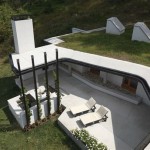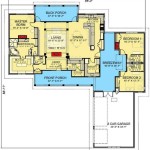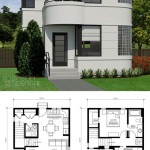Colonial Style House Plans are architectural designs inspired by the homes built during the colonial era of American history, typically from the 17th to 19th centuries. These plans aim to replicate the aesthetic and functional characteristics of traditional colonial homes, embodying a sense of historical charm and architectural appeal.
Whether you seek a classic Georgian manor with its symmetrical facade and grand columns or a cozy Cape Cod cottage with its shingled exterior and cozy fireplaces, Colonial Style House Plans offer a wide range of options to suit diverse tastes and requirements. These plans meticulously capture the essence of colonial architecture, ensuring that your home exudes both historic ambiance and modern functionality.
In the following sections, we will delve into the captivating details of Colonial Style House Plans, exploring their defining features, popular variations, and practical considerations to help you embark on your journey towards building a timeless and enchanting home.
Colonial Style House Plans encompass a rich tapestry of architectural elements and design principles that have stood the test of time. Here are nine essential points to consider:
- Symmetrical Facades
- Central Chimneys
- Gabled Roofs
- Multi-Paned Windows
- Classic Columns
- Formal Entryways
- Built-In Cabinetry
- Fireplaces
- Historical Charm
These elements harmoniously combine to create homes that exude both historical elegance and modern comfort.
Symmetrical Facades
Symmetrical facades are a hallmark of Colonial Style House Plans, characterized by a balanced and harmonious arrangement of architectural elements on both sides of a central axis. This symmetry creates a sense of order, formality, and grandeur that is both visually appealing and timeless.
- Central Entryway: The front door is typically positioned in the center of the facade, flanked by windows on either side. This arrangement creates a welcoming and inviting entrance, drawing the eye towards the focal point of the home.
- Matching Windows: Windows are arranged symmetrically on both sides of the central axis, typically with matching sizes, shapes, and styles. This symmetry enhances the overall balance and proportion of the facade, contributing to its cohesive and aesthetically pleasing appearance.
- Balanced Details: Other architectural details, such as dormers, shutters, and decorative moldings, are also arranged symmetrically to maintain the overall balance and harmony of the facade. This attention to detail adds depth and visual interest to the home’s exterior.
- Formal Aesthetic: The symmetrical facade of a Colonial Style House Plan conveys a sense of formality and elegance. It evokes a sense of historical charm and architectural tradition, making these homes suitable for both grand estates and cozy cottages.
Overall, symmetrical facades are an essential element of Colonial Style House Plans, contributing to their timeless appeal and architectural significance.
Central Chimneys
Central chimneys are a defining feature of Colonial Style House Plans, serving both a functional and aesthetic purpose. They are typically positioned in the center of the home, rising prominently from the roofline and providing a focal point for the exterior.
Functional Significance: Central chimneys played a crucial role in early American homes, providing a central point for heat distribution. Fireplaces were commonly located on the first floor, with the chimney carrying the smoke and fumes upwards. This efficient design ensured that heat could be evenly distributed throughout the home, providing warmth and comfort during winter months.
Architectural Appeal: In addition to their functional purpose, central chimneys add significant architectural character to Colonial Style House Plans. The tall, slender chimneys create a striking visual element, drawing the eye upward and adding a sense of verticality to the facade. They are often adorned with decorative details such as corbelling, molding, or caps, enhancing their visual appeal and contributing to the overall charm of the home.
Historical Authenticity: Central chimneys are an integral part of the historical authenticity of Colonial Style House Plans. They replicate the architectural style of homes built during the colonial era, reflecting the building techniques and materials used at the time. By incorporating central chimneys into their designs, these plans preserve the historical character and charm of colonial architecture.
Overall, central chimneys are an essential element of Colonial Style House Plans, combining functional efficiency with architectural appeal and historical significance. They serve as a reminder of the practicalities and aesthetics of early American homes, adding timeless charm to modern-day dwellings.
Gabled Roofs
Gabled roofs are a defining characteristic of Colonial Style House Plans, contributing significantly to their historical charm and architectural appeal. These roofs are characterized by two sloping sides that meet at a ridge along the peak of the home.
Historical Significance: Gabled roofs have been a prominent feature of American architecture since the colonial era. They were commonly used in homes built by English colonists, who brought the design with them from their homeland. Gabled roofs provided practical advantages in the often harsh weather conditions of the time, effectively shedding rain and snow.
Architectural Versatility: Gabled roofs offer great architectural versatility, allowing for a variety of rooflines and shapes. They can be simple and symmetrical, with a single gable over the main section of the house, or more complex, with multiple gables and dormers. This versatility allows for a wide range of design possibilities, from traditional saltbox cottages to grand Georgian mansions.
Aesthetic Appeal: Gabled roofs add significant visual interest and character to Colonial Style House Plans. The sloping sides create a dynamic and visually appealing roofline, while the ridge line adds a sense of height and grandeur to the home. Gabled roofs can be further enhanced with decorative elements such as dormers, cupolas, and widow’s walks, which add to their overall charm and architectural appeal.
Overall, gabled roofs are an essential element of Colonial Style House Plans, reflecting the historical significance, architectural versatility, and aesthetic appeal of this enduring architectural style.
Multi-Paned Windows
Multi-paned windows are a distinctive feature of Colonial Style House Plans, contributing to their historical charm and architectural authenticity. These windows are characterized by multiple small panes of glass arranged in a grid-like pattern, creating a unique and visually appealing appearance.
- Historical Significance: Multi-paned windows were commonly used in colonial-era homes due to limitations in glass manufacturing technology. At the time, it was challenging to produce large panes of glass, so smaller panes were joined together using lead came or wooden muntins to create larger window openings. This construction method became a defining characteristic of colonial architecture and is still incorporated into Colonial Style House Plans today.
- Abundant Natural Light: Multi-paned windows allow for ample natural light to enter the home, creating a bright and airy interior. The multiple panes provide a wider surface area for light to pass through, maximizing the amount of natural illumination. This feature is particularly beneficial in living spaces, kitchens, and other areas where natural light is desired.
- Architectural Detail: Multi-paned windows add intricate architectural detail to Colonial Style House Plans. The grid-like pattern creates a visually interesting element that enhances the overall aesthetic appeal of the home. The panes can be arranged in various configurations, from simple rectangular grids to more elaborate diamond or arched patterns, adding to the home’s unique character.
- Energy Efficiency: Modern multi-paned windows are designed with energy efficiency in mind. Advanced glazing technologies and insulated frames help to minimize heat loss during winter months and reduce solar heat gain during summer months. This feature contributes to the overall energy efficiency of the home, potentially resulting in lower energy bills.
Overall, multi-paned windows are an essential element of Colonial Style House Plans, combining historical significance, abundant natural light, architectural detail, and energy efficiency. They are a testament to the enduring charm and practicality of colonial architecture, adding timeless appeal to modern-day homes.
Classic Columns
Classic columns are a striking and elegant architectural element that has been incorporated into Colonial Style House Plans for centuries. These columns, inspired by ancient Greek and Roman architecture, add a touch of grandeur and historical charm to both the exterior and interior of the home.
- Structural Support: Columns serve a structural purpose by providing support to the roof, porches, and other architectural features of the home. They are typically made of durable materials such as wood, stone, or brick and are designed to the weight of the structure above.
- Architectural Detail: Columns add significant architectural detail and visual interest to Colonial Style House Plans. They can be fluted, meaning they have vertical grooves along their surface, or smooth, depending on the desired aesthetic. The capitals, or tops of the columns, can be adorned with decorative elements such as scrolls, leaves, or other intricate designs.
- Formal Entryways: Columns are often used to create a grand and welcoming entryway, framing the front door and creating a sense of importance. They can be arranged in pairs or clusters, supporting a portico or porte-cochere, and adding a touch of formality to the home’s facade.
- Historical Significance: Classic columns have been a prominent feature of architecture throughout history, particularly in classical Greek and Roman buildings. By incorporating columns into Colonial Style House Plans, architects pay homage to the architectural traditions of the past and create a sense of historical continuity.
Overall, classic columns are an essential element of Colonial Style House Plans, combining structural support, architectural detail, formal aesthetics, and historical significance. They add a touch of grandeur and timeless beauty to both the exterior and interior of the home, creating a lasting impression of architectural elegance.
Formal Entryways
Formal entryways are a defining characteristic of Colonial Style House Plans, creating a grand and welcoming space that sets the tone for the rest of the home. These entryways typically feature classic columns, elegant moldings, and decorative details that evoke a sense of historical charm and architectural grandeur.
- Imposing Columns: Columns are a striking feature of formal entryways in Colonial Style House Plans. They can be fluted or smooth, and are often arranged in pairs or clusters to create a sense of symmetry and grandeur. The columns support the roof of the portico or porte-cochere, providing both structural support and a visually impressive architectural element.
- Ornate Moldings: Moldings are used extensively in formal entryways to add intricate detail and visual interest. Crown moldings, chair rails, and baseboards are commonly found, adding a touch of elegance and sophistication to the space. These moldings can be simple or elaborate, depending on the desired aesthetic.
- Decorative Details: Formal entryways in Colonial Style House Plans often incorporate decorative details that enhance their visual appeal. Transom windows above the door, sidelights on either side, and decorative hardware add to the overall grandeur of the entryway. These details create a sense of historical authenticity and reflect the craftsmanship of the colonial era.
- Welcoming Ambiance: Formal entryways are designed to create a welcoming and inviting ambiance for guests. The spaciousness of the entryway, combined with the elegant architectural details, creates a sense of warmth and hospitality. This space sets the tone for the rest of the home, offering a glimpse into the architectural style and historical charm that awaits within.
Overall, formal entryways are an essential element of Colonial Style House Plans, combining architectural grandeur, decorative details, and a welcoming ambiance. They serve as a grand introduction to the home, reflecting the historical significance and timeless appeal of this enduring architectural style.
Built-In Cabinetry
Built-in cabinetry is an integral part of Colonial Style House Plans, providing both functional storage and aesthetic charm. These custom-crafted cabinets are seamlessly integrated into the walls and architectural features of the home, creating a cohesive and historically accurate interior design.
- Practical Storage: Built-in cabinetry offers a practical solution for storage needs, maximizing space utilization and maintaining a clutter-free environment. Cabinets can be designed with adjustable shelves, drawers, and compartments to accommodate various items, from books and dishes to linens and household supplies.
- Space Optimization: By incorporating cabinetry into the walls and other architectural elements, Colonial Style House Plans make efficient use of space. This is particularly beneficial in smaller homes or rooms where every square foot is valuable. Cabinets can be built into alcoves, under staircases, and around fireplaces, creating additional storage without sacrificing living space.
- Historical Authenticity: Built-in cabinetry was a common feature in colonial-era homes, serving both functional and decorative purposes. Modern Colonial Style House Plans incorporate built-in cabinetry to maintain historical authenticity and preserve the charm of the architectural style. Cabinets are often designed with traditional details such as raised panels, decorative moldings, and antique hardware.
- Aesthetic Appeal: In addition to their functionality, built-in cabinets enhance the aesthetic appeal of Colonial Style House Plans. They create a sense of warmth and coziness, adding character and charm to the interior. The custom-crafted designs and attention to detail ensure that the cabinets complement the overall architectural style of the home.
Overall, built-in cabinetry is an essential element of Colonial Style House Plans, combining practical storage solutions, space optimization, historical authenticity, and aesthetic appeal. These custom-crafted cabinets seamlessly integrate into the home’s architectural features, creating a cohesive and charming interior design that reflects the enduring legacy of colonial architecture.
Fireplaces
Fireplaces were the heart of colonial homes, providing warmth, comfort, and a central gathering place for families and friends. Colonial Style House Plans incorporate fireplaces as a nod to this historical tradition, adding both functional and aesthetic value to the home.
Warmth and Comfort: Fireplaces are an excellent source of heat, particularly in colder climates. They create a cozy and inviting ambiance, making them a popular choice for living rooms, family rooms, and master bedrooms. Modern fireplaces are designed with efficient heating systems, ensuring that they distribute heat evenly throughout the space.
Focal Point and Ambiance: Fireplaces serve as a natural focal point in any room. Their flickering flames and crackling logs create a warm and inviting atmosphere, making them a perfect place for relaxation and conversation. The mantel above the fireplace is often decorated with artwork, family photos, or other cherished items, personalizing the space and adding to its charm.
Historical Authenticity: Fireplaces were an essential feature of colonial homes, providing both heat and a gathering place for the family. By incorporating fireplaces into Colonial Style House Plans, architects maintain the historical authenticity of the architectural style. These fireplaces are often designed with traditional details such as brick or stone surrounds, decorative moldings, and cast iron grates.
Overall, fireplaces are an essential element of Colonial Style House Plans, offering warmth, comfort, a focal point, and historical authenticity. They create a cozy and inviting atmosphere, making them a cherished feature in both traditional and modern homes.
Historical Charm
Colonial Style House Plans embody the historical charm of the colonial era, capturing the architectural essence and lifestyle of a bygone time. These plans meticulously recreate the distinctive features and details that characterized colonial homes, evoking a sense of nostalgia and historical connection.
Architectural Authenticity: Colonial Style House Plans adhere to the architectural principles and design elements of the colonial period. They incorporate symmetrical facades, central chimneys, gabled roofs, multi-paned windows, and classic columns, ensuring historical accuracy and authenticity. By preserving these traditional features, these plans pay homage to the architectural heritage of the colonial era.
Historical Details: In addition to the overall architectural style, Colonial Style House Plans incorporatesuch as decorative moldings, raised paneling, and antique hardware. These details add depth and character to the home’s interior and exterior, creating a sense of historical continuity. The use of traditional materials such as brick, stone, and wood further enhances the authenticity of these plans.
Nostalgic Ambiance: Colonial Style House Plans evoke a nostalgic ambiance that transports homeowners to a simpler time. The warm and inviting fireplaces, cozy built-in cabinetry, and elegant formal entryways create a sense of comfort and familiarity. By incorporating these elements, these plans allow homeowners to experience the charm and tranquility of colonial living in a modern context.
Overall, Historical Charm is a defining characteristic of Colonial Style House Plans. These plans successfully capture the architectural authenticity, and nostalgic ambiance of the colonial era, providing homeowners with a unique opportunity to embrace the charm and legacy of a bygone time.








Related Posts








